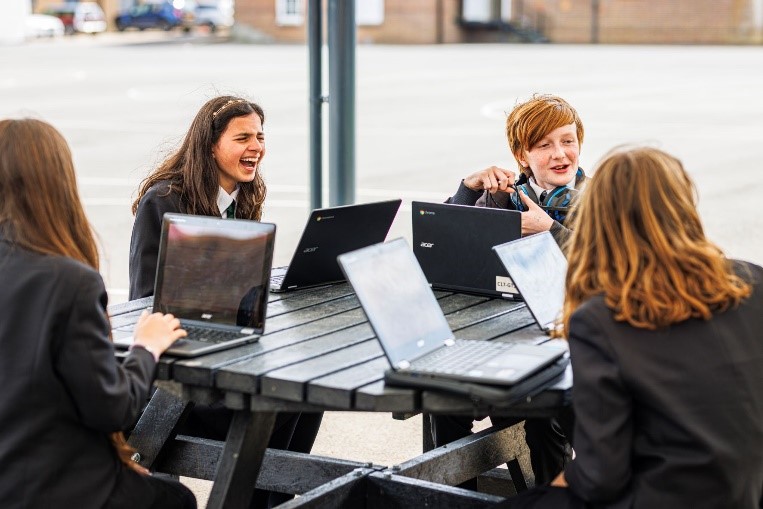Protect art lessons to help children stay stress-free and engage with learning, says Independent Association of Prep Schools

- New study shows children aged 9 – 10 feel more awake (47%) and active (38%) following art sessions
- Moods were also improved with children saying art gave them an outlet to express themselves, leaving them feeling more cheerful
- Independent Association of Prep Schools calls on schools to deploy art lessons tactically to help pupils re-engage with learning
London, 4th August 2022: Do not cut art lessons and instead use them wisely to re-engage children and support them in opening up about their feelings and emotions, says Independent Association of Prep Schools (IAPS). The advice follows its new study1 which reveals pupils feel more awake (47%), energetic (39%) and active (38%) after a 45-minute art session. It comes at a time when many schools are facing budget cuts and are under pressure to drop art and other creative lessons.
Conducted in partnership with Dr Bettina Hohnen, Honorary Senior Teaching Fellow at University College London and clinical psychologist specialising in child mental health, the study explored the effects of art on children aged 9 and 10. Students from IAPS schools took part in independent focus group sessions and were asked to complete a mood questionnaire before and after a 45-minute art session, in which they could pick what they drew, painted, or made.
In addition to boosted energy levels, the study found the sessions reduced some of the negative moods tracked, with more than one in five (22%) children saying they felt less bored following their art session and 14% saying they felt less sad, highlighting how art can be used to increase student engagement and rebuild concentration levels.
IAPS believes the study demonstrates that art should be used by schools more creatively, with post-Covid year groups under pressure to deliver in core academic subjects, and children managing different emotions and stresses than previous cohorts.
A previous study2 from IAPS in partnership with TooledUp demonstrated how two-thirds (67%) of school staff were worried about pupils’ ability to interact face-to-face post-pandemic, potentially damaging their social skills and emotional development. Exploring potential solutions, in IAPS’ latest study many children said art made them “feel really good” and “more calm”. Other students said they “like being able to draw things from the outside after being in lockdown,” and that they enjoyed art because it “lets me release all my thoughts; I find it really calming”. Children also felt inspired to consider art as a profession in later life.
Comments from students on the day show how many found art calming and allowed them to express themselves, with trends in the data suggesting art enables children to release pent-up anger and frustration, or more difficult emotions such as feeling annoyed (-14%) or cross (-15%). Additionally, two-fifths (41%) of children reported feeling more cheerful and 37% felt more pleased following the activity.
Christopher King, CEO of IAPS said: “The creative side of education is hugely important, but not regulated, so when it comes to school budgets and comparing against inspection results, we are seeing art and other creative activities being cut. This needs to stop, as art teaches pupils so much more than to simply draw, paint or create. It teaches them skills to cope with their emotions and provides an outlet to express themselves. This is so important post-Covid.
“We encourage all schools to think creatively when it comes to art, before making any changes to curriculums or extra-curricular activities. Art can be used to boost pupils’ energy levels and help them cope with emotions and talk about difficult issues. This is something which particularly younger students have struggled to learn during the pandemic. For many children, especially those who struggle with more academic subjects, art provides a reason to attend school and something for them to enjoy both in lessons and at home.”
Dr Bettina Hohnen, Clinical Psychologist, commented: “Arts activities involve and develop many key skills including attention, imagination, engagement, emotional regulation, understanding of others and self. Interestingly, not only were many children reporting increases in positive moods after the session, but many reported positive mood scores initially, suggesting they were excited to be taking part and have the creative opportunity. The results of this small study show the positive impact when children are given the opportunity to express themselves creatively.
“Some children said it was a safe space, where they could be themselves and be accepted, with one child saying “it expresses who I am”. This sense of belonging and place to be authentic is essential for children, particularly at a time when re-integration is high on the agenda post-lockdown.
“While the emotional direction of change was not the same for every child and it is important to consider the wider aspects of a person’s life, the research demonstrates how important art is for children to potentially improve wellbeing, reduce stress, increase positive energy and motivation and allow them to express themselves. This is a subject that ticks all the boxes for a school committed to improving the cognitive, social and emotional wellbeing of their pupils”.
